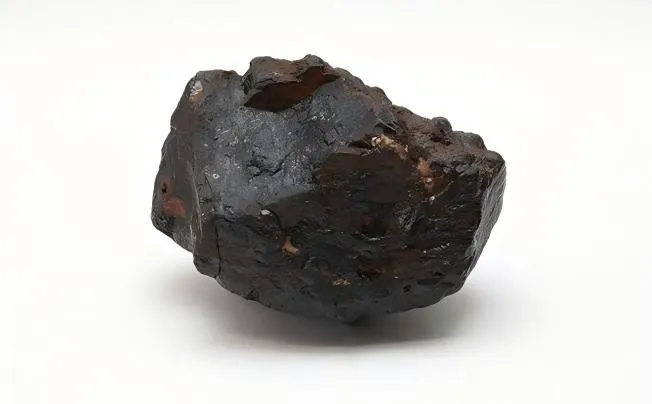Ferrosilicon is a crucial alloy composed primarily of iron and silicon. This compound typically contains around 70-75% silicon and 25-30% iron, with trace amounts of other elements like carbon and calcium.
Magnetic Properties of Ferrosilicon
Ferromagnetism
Ferromagnetism is a phenomenon in which certain materials possess a strong and permanent magnetic field. Ferrosilicon, with its unique composition of iron and silicon, falls into this category. This magnetic behavior arises from the alignment of atomic spins within the material.
Each atom in ferrosilicon possesses an intrinsic magnetic moment due to the arrangement and orientation of its electrons. In ferromagnetic materials, neighboring atoms align their magnetic moments parallel to one another, creating what are known as "domains." These domains consist of millions or billions of atoms that act together as tiny magnets.
In the case of ferrosilicon, the presence of iron (Fe) is primarily responsible for its ferromagnetic properties. Iron is an abundant element with unpaired electrons that readily align in a coordinated manner to produce a net magnetization within each domain.
The alignment occurs due to interactions between neighboring atoms through exchange coupling, resulting in a cooperative spin arrangement that amplifies the overall magnetization. As a result, ferrosilicon not only becomes magnetized but can also maintain this magnetization over time without requiring an external field.
Factors influencing the magnetism in ferrosilicon (composition, temperature, grain size)
The magnetism exhibited by ferrosilicons can vary depending on several factors, including composition, temperature, and grain size. Composition plays a significant role in determining the magnetic properties of ferrosilicons. The proportion of iron and silicon influences the saturation magnetization and coercivity—the ability to resist demagnetization—of the material.
Higher iron content generally results in stronger magnetism since it contributes more unpaired electrons available for alignment. Temperature also affects the ferrosilicon's magnetic behavior.
As temperature increases, thermal energy disrupts atomic alignment within domains causing decreased overall magnetization. This phenomenon is described by Curie's law—a mathematical relationship between temperature and paramagnetism—wherein above a certain critical temperature known as Curie temperature (Tc), materials lose their permanent magnetic properties.
Furthermore, grain size plays an essential role in determining how easily domains form within the material. Smaller grains tend to have better-defined domain structures since some fewer defects or imperfections hinder atomic alignment.
On the other hand, larger grains may have less well-defined domains due to increased grain boundaries or impurities present in those regions. By understanding these factors influencing magnetism in ferrosilicon—namely composition, temperature dependence according to Curie's law, and grain size—the industrial applications and practical usage can be optimized for specific purposes where strong or tailored magnetic properties are required.
Steel Industry
Revolutionizing Steel Production with Ferrosilicon
In the steel industry, the crucial role of magnetic ferrosilicon cannot be overstated. One of the primary applications of ferrosilicon is in the desulfurization process during steel production.
By utilizing magnetic separation techniques with ferrosilicon, steel manufacturers can effectively remove sulfur impurities from molten steel, ensuring a higher-quality end product. This process not only enhances the mechanical properties and durability of the steel but also contributes to meeting stringent industry standards for purity.
Enhancing Steel Quality and Strength through Controlled Magnetism
The controlled use of magnetic ferrosilicon plays a pivotal role in optimizing steel quality and strength. By adjusting the magnetic properties of ferrosilicon, manufacturers can precisely control various aspects of the steelmaking process.
This includes influencing grain size refinement, improving machinability, and enhancing overall structural integrity. The ability to fine-tune magnetism in ferrosilicon allows for tailored solutions to meet specific requirements in different grades and types of steel products.
Mineral Processing
The Efficiency of Dense Media Separation Techniques
In mineral processing operations, magnetic ferrosilicon is instrumental in facilitating dense media separation—a highly efficient technique for mineral concentration. By incorporating ferrosilicon particles into a suspension medium, minerals with varying densities can be effectively separated based on their response to magnetic forces. This process not only enables precise separation but also significantly increases the efficiency and yield of valuable minerals from ore deposits.
Empowering Mining Operations through Enhanced Ore Recovery Rates
The utilization of magnetic ferrosilicon in mineral processing has revolutionized mining operations by boosting ore recovery rates to unprecedented levels. By harnessing the unique properties of ferrosilicon for selective mineral separation, mining companies can extract a higher percentage of valuable ores from raw materials while minimizing waste. This increased efficiency not only maximizes production output but also offers a sustainable solution for optimizing resource utilization in mining activities.
The Science Behind Ferromagnetism in Ferrosilicon
Domain Theory
In ferrosilicon, ferromagnetism arises from the alignment of magnetic domains within the material. These domains consist of groups of atoms that have magnetic moments aligned in a particular direction.
When exposed to a magnetic field, these domains tend to align themselves parallel to the external field, creating a net magnetic moment for the material. In simpler terms, imagine these domains as tiny magnets within the ferrosilicon that align themselves like compass needles pointing north when influenced by an external magnet.
The process of domain alignment is crucial for ferromagnetic materials like ferrosilicon to exhibit magnetism. As these domains align in response to an external magnetic field, they collectively contribute to the overall magnetic behavior of the material.
In ferrosilicon, which contains iron and silicon elements known for their magnetically active properties, this alignment process is particularly effective due to the unique composition of the alloy. The ability of ferrosilicon to facilitate domain alignment plays a significant role in its overall magnetism and makes it a versatile material in various industrial applications where controlled magnetism is required.
Effectiveness as a Catalyst for Domain Alignment Due to Unique Composition
The composition of ferrosilicon plays a pivotal role in acting as a catalyst for efficient domain alignment within the material. The presence of iron and silicon elements in specific proportions creates an environment conducive to enhancing magnetic properties and promoting domain alignment when subjected to external magnetic fields.
Iron provides the necessary ferromagnetic properties, while silicon contributes to stabilizing and strengthening these properties within the alloy. Moreover, the crystalline structure of ferrosilicon enables better organization and alignment of magnetic domains compared to other non-magnetic materials.
This unique combination allows ferrosilicon to exhibit strong magnetization characteristics and maintain them even after removing the external magnetic influence – a phenomenon known as hysteresis. By serving as a catalyst for domain alignment through its distinct composition, ferrosilicon stands out as an essential component in applications requiring precise control over magnetism, such as steel production processes and mineral separation techniques.







